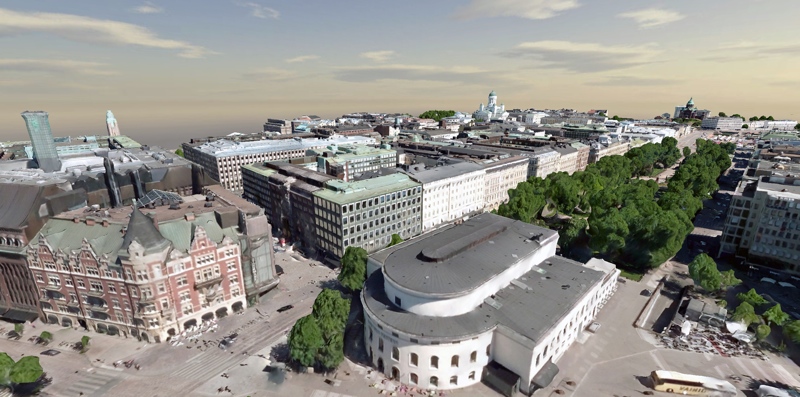Paul Doherty, CEO of The Digit Group is at the forefront of the smart city movement. His firm has worked alongside many of the world’s largest governments to develop some of the highest profile urban projects in the world: on any given day, your email could reach Doherty in Australia, Saudi Arabia, or speaking in front of the UN on behalf of China‘s own smart city initiatives.
Doherty will also be keynoting at next week’s International LiDAR Mapping Forum in Denver on the role of lidar mapping in the smart cities of the future–so I thought it couldn’t hurt to ask him a few questions in advance of his presentation. (Register here!) During our quick chat, he gave me a better sense for why lidar is so important to the smart city, what challenges we face in using this 3D data, and what needs to change before we can use it to its full potential.
SPAR 3D: For those who don’t know, can you quickly explain why lidar data is crucial to the smart city?
Paul Doherty: A successful smart city thrives on accurate and authenticated data. The visualization of this data provides valuable insights to anticipate, make, and analyze decisions. Due to the vast size of the data that cities generate and use to efficiently and effectively manage city operations, visual data is fast becoming the de facto standard for smart cities. Lidar inherently provides accurate, authenticated and visual data, thus becoming a key element in designing, managing and operating high performance urban environments.
What are the challenges of keeping that lidar data up to date for real-time smart city applications?
Two big challenges for keeping LiDAR data up to date in a continuous manner are:
- Coordination with Digital Twin solutions – Lidar data must be part of a process-driven ecosystem in order to provide valued outputs, analytics and reporting. A big piece of this process workflow is to have this data running through City Information Management tools like Digital Twin platforms (BIM, Geospatial, 3D models, etc.). Unless this coordination and integration occurs, it is a difficult proposition for smart cities to use lidar data in a continuous manner.
- Budgets – There are very few examples to demonstrate how the continuous data flows will be paid for, as there are no clear budget line items for this process. Including the cost into existing budget line items like security and safety can be a solution.
What are some innovative ways that governments throughout the world are meeting these challenges?
In China, LiDAR data is acquired, managed and distributed as part of a surveillance system to fight crime. The goal of the Chinese system is to anticipate needs by analyzing historic data through the use of crime heat maps and other task-oriented solutions, to have the system discover trends and pattern behaviors, and then provide suggested solutions. In this example, captured lidar data is processed by machine learning process, leading to artificial intelligence-style results.
Both the Menlo Park (California) Fire Department and the Leicestershire (U.K.) Fire and Rescue Service are using UAEs and lidar to provide real time views of fire events to provide assessment information to incoming first responders. Saving seconds and minutes and lives, this is a great example of solutions that exceed the need to provide a direct financial return. There is nothing more important than saving lives. Always consider this when thinking of your own value in your business plans.
What needs to change about the lidar technology on the market to make it easier to use this data for smart city applications in the future? What do vendors need to offer?
Lidar solution providers need to focus on not being the center of the ecosystem solution, but rather being a valuable component of the overall solution. Continued efforts to coordination with digital twin solutions providers will be an excellent move forward strategy for the near future. Lidar solution providers will need to provide and work with open APIs with input and throughput solutions in order for the captured lidar data to be properly managed.
Interested in hearing more about the symbiotic relationship between lidar mapping the cities of the future? Attend the International LiDAR Mapping Forum (ILMF) where Doherty will be presenting during the opening keynote session on Monday, January 28. Register here.









